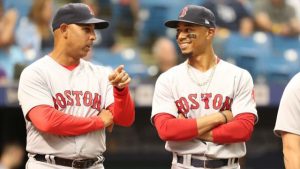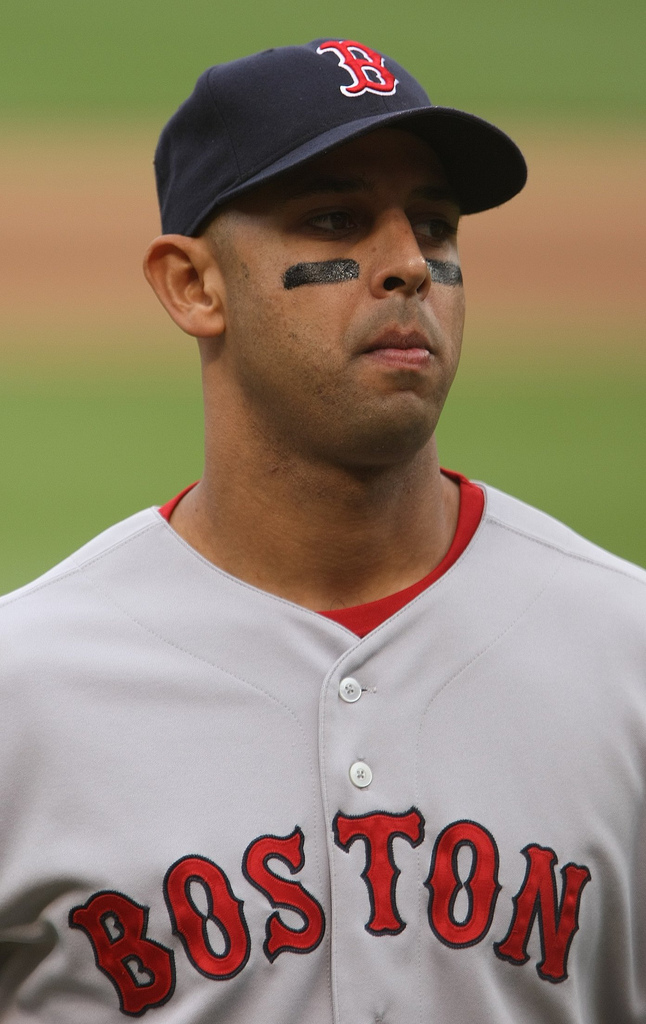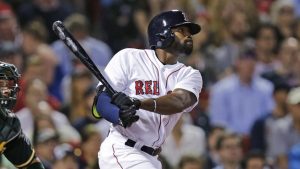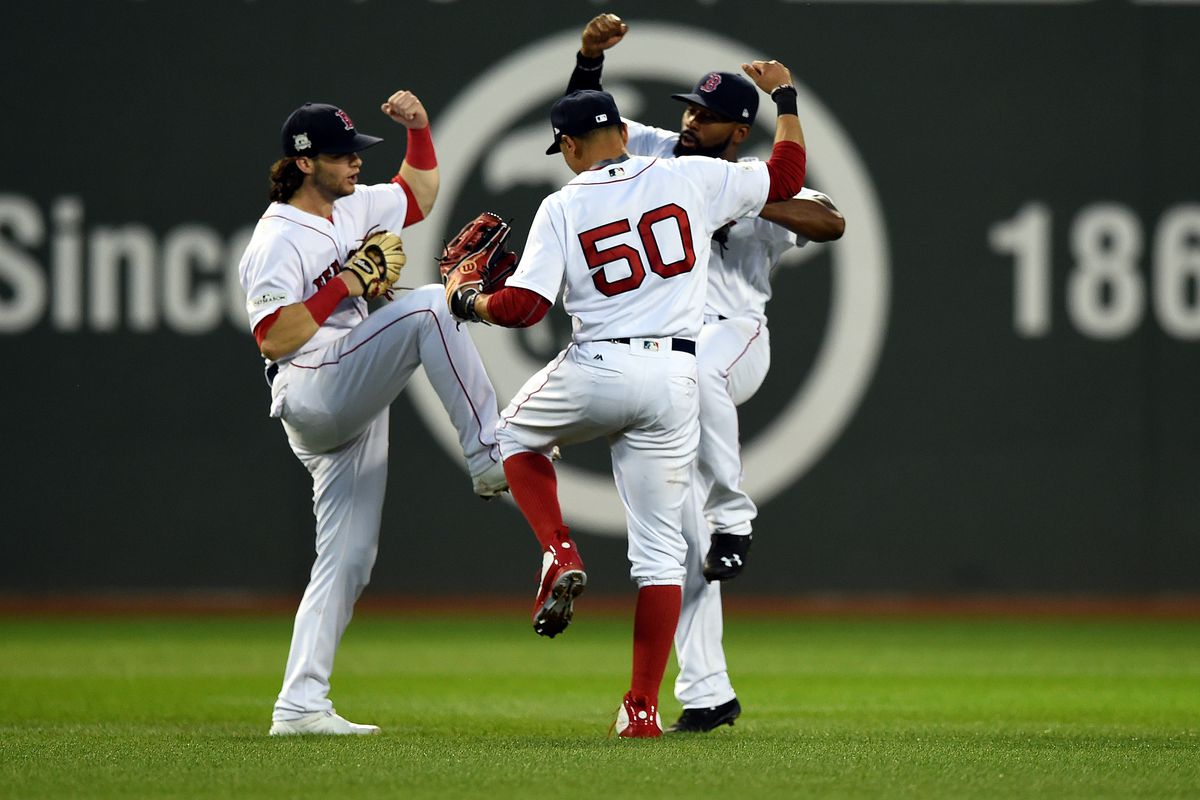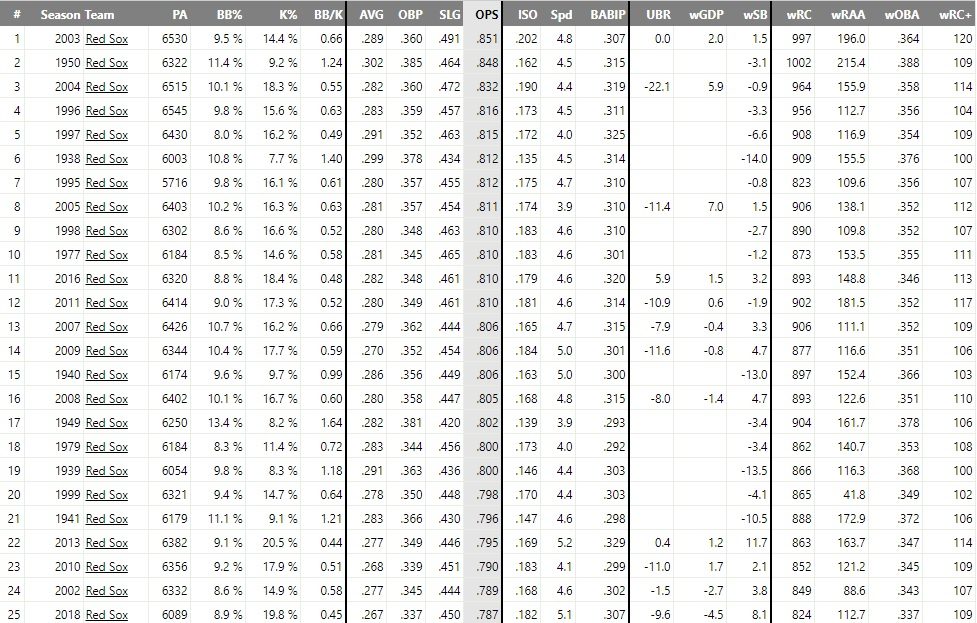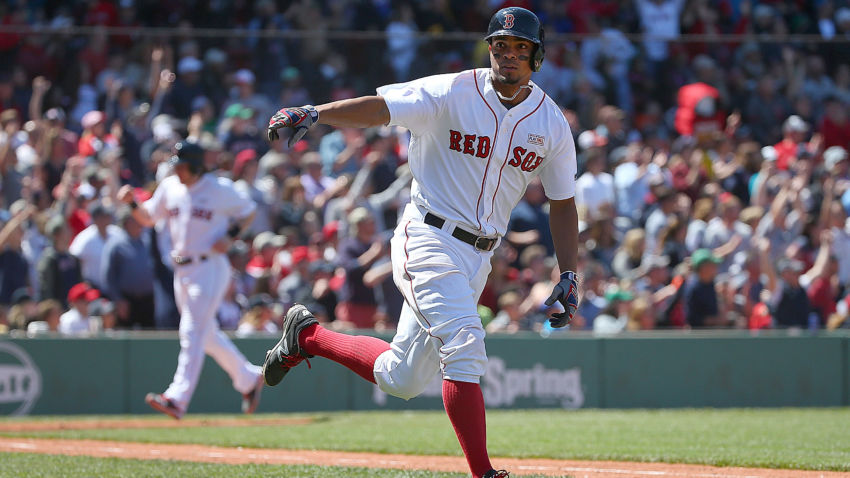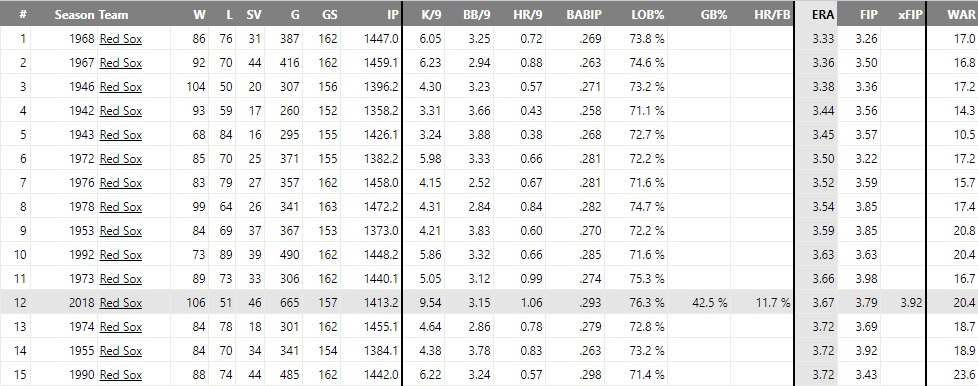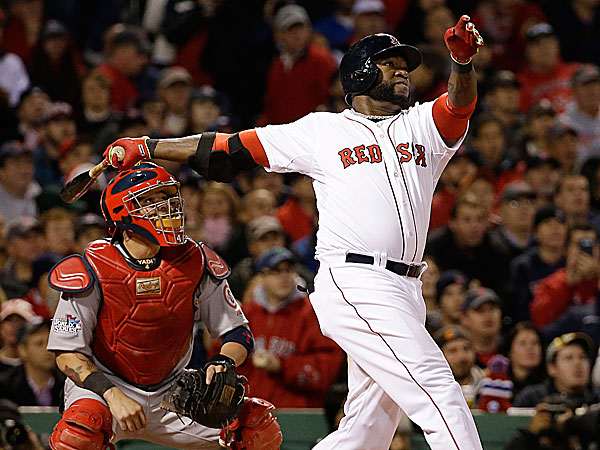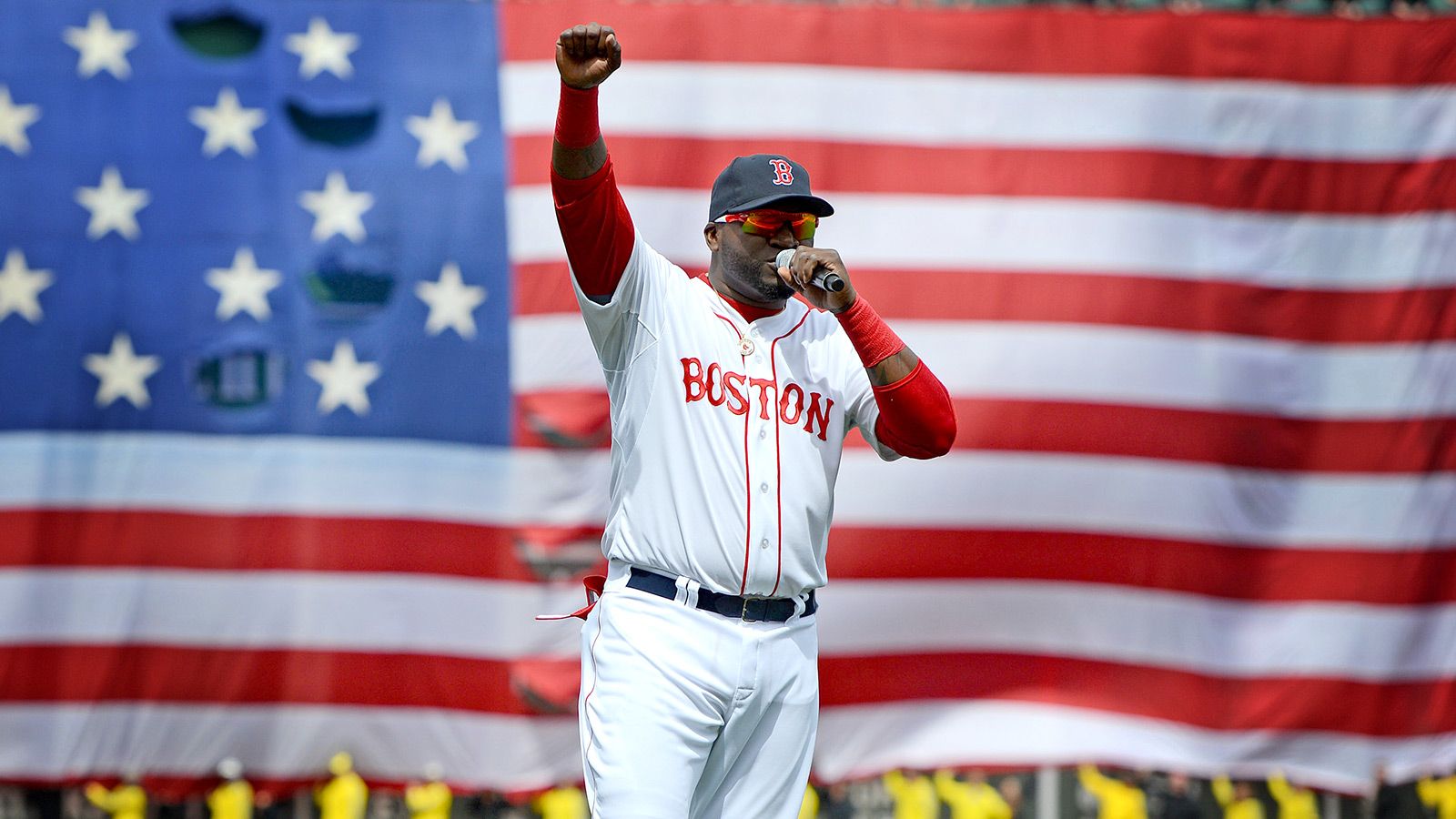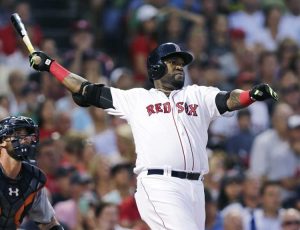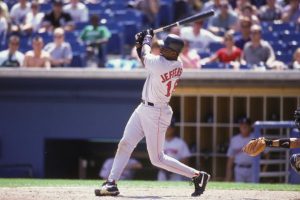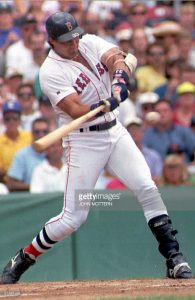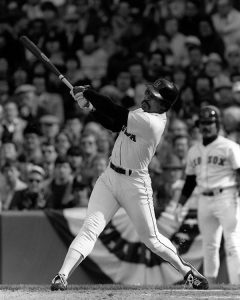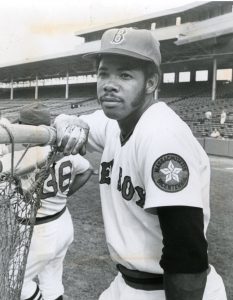Free agency this winter has been colder than the temperatures outside. Those baseball fans among us are starving for action and something to talk about. Hopefully the team is drawing near, as Spring Training is just around the corner. But, with free agency currently lulling us all to sleep, I decided to take a look at some of the best free agent signings the Red Sox have ever made.
David Ortiz
Big Papi is in a class all by himself. The Red Sox picked up Ortiz cheap after the Twins mistakenly dumped him. I remember thinking it was odd the Twins let him go and was happy to see the Sox bring him aboard, but obviously no one knew what would come of it. Ortiz had homered twenty times the year before in a part-time role and eighteen times the year before that. The Red Sox signed Ortiz for just 1.25 million dollars. The rest, as they say, is history.
Ortiz blossomed in Fenway and turned into maybe the most popular and beloved Red Sox of all-time. There are too many instances to cite; all the game-winning hits, the postseason heroics, David Ortiz is a living legend. He hit 483 home runs with the Red Sox. In several decades, people will tell of his heroic feats and some will wonder if half of them really happened. All he did was that unbelievable, that legendary. In several years Cooperstown should be opening its doors to him. When they do, the entire city of Boston and a large portion of the states in New England will try to get tickets and descend upon the tiny town, trying to watch the lovable Papi become enshrined.
In 2013, Ortiz came to the forefront, not for his baseball heroics, but for a motivational speech he gave following the Boston Marathon bombing. This speech can still give chills nearly five years later. David Ortiz was, is, and will forever remain, a Boston hero.

Ortiz rallied the entire city behind him after the tragic marathon bombing in 2013.
The Big Money Signings
Manny Ramirez
Manny Ramirez could be a headache, and was put on the trade block multiple times, but all in all the signing paid off. He was given an eight year contract worth 160 million dollars by the Red Sox before the 2001 season. Despite the problems he could cause, and “Manny being Manny”, Ramirez helped the Red Sox win two World Series and was the MVP of the curse breaker in 2004. That series he batted .412 to win the award. In four postseasons with the Red Sox he batted .321 with eleven home runs. In regular season play, Manny hit .312 with 274 home runs and a .999 OPS.
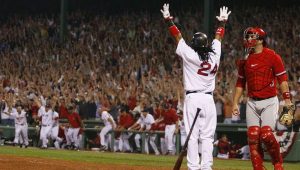
Manny Ramirez of the Red Sox celebrates after connecting for a three-run home run to defeat the Angels, 6-3 in Game 2 of the ALDS. (Photo by Jim Rogash/Getty Images)
Johnny Damon
The Red Sox signed Johnny Damon to a four year deal worth 31 million dollars before the 2002 season. Damon batted .295 in his four seasons with Boston, making two All-Star Games. He stole 30 bases in each of his first two seasons, then hit 20 homers in his third season. Damon helped the Red Sox break the curse in 2004, helping the band of “idiots” overcome the “evil empire.” Damon hit two huge home runs in game seven of the ALCS that season to defeat the Yankees en route to the World Series. He may have cut off all his hair and gone to the Yankees, transforming from Jesus into the Antichrist, but during his deal he was certainly worth the money.
Keith Foulke
After the bullpen struggled in 2003, the Red Sox went out and signed closer Keith Foulke to a three year deal worth 18.75 million. He earned every penny of the entire deal in 2004 and embedded himself into Red Sox lore. After pitching to a 2.17 ERA and saving 32 games that season, Foulke became a postseason hero. With the team down 0-3 to the Yankees in the ALCS, needing a win to avoid the sweep, Foulke pitched 2.2 shutout innings to keep the game alive. He then pitched each of the next two days to help the Red Sox force a game seven. After winning the series, Foulke pitched in all four World Series games and recorded the unforgettable final out.
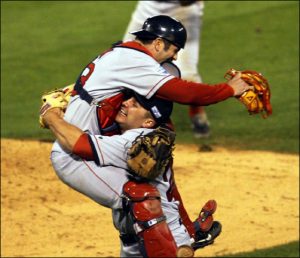
Bargain Contracts
Bill Mueller
Bill Mueller was a cheap signing heading into the 2003 season to handle the hot corner. Signed to a three year deal worth only 6.7 million dollars in total, Mueller was worth more than that in just the first season. He led the American League in hitting that year, batting .326 with 19 home runs, 45 doubles and a .938 OPS. That was a career year for Mueller, but he still batted .290 over the next two seasons. Mueller of course also had the base hit to score Dave Roberts, sending game four of the ALCS in 2004 to extra innings. Mueller batted .321 that postseason as the Red Sox won their first World Series in 86 years.
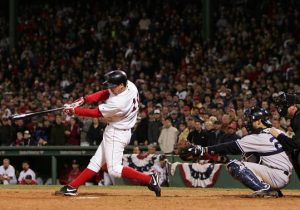
Adrian Beltre
Beltre was a big name, but came to Boston on a relatively cheap deal. After a down season in 2009, Beltre bet on himself to rebound and cash in with a larger contract the following season. The Red Sox were able to procure his services for 9 million dollars in 2010. Beltre proceeded to have the second best season of his career; he hasn’t stopped hitting since. Beltre to that point had been a decent third baseman, but somewhat disappointing. His season with the Red Sox started him on an epic second half of his career journey which is leading him to the baseball Hall of Fame. In his one season in Boston, Beltre batted .321 with 28 homers and led the league with 49 doubles.
Koji Uehara
Koji had always put up good numbers prior to coming to Boston, but had troubles staying healthy. The Red Sox initially gave him a two year deal worth 9.25 million dollars. Uehara stayed healthy and had an insanely dominant first season in Boston. In 2013, Uehara was 4-1 with a microscopic 1.09 ERA, 0.56 WHIP and saved 21 games. He then allowed one run in 13.2 innings pitched during the postseason as the Red Sox won the World Series. Koji was the MVP of the ALCS that year. Uehara ended up spending four seasons in Boston, posting a 2.19 ERA and 79 saves.
Off the Scrap Heap
Tim Wakefield
Wakefield burst onto the scene in 1992 with the Pirates, going 8-1 with a 2.15 ERA. The fall was quick though and Wakefield was back in the minor leagues for part of the next season and the entire 1994 season. The Pirates released him before the 1995 season started. Just under a week later, the Red Sox decided to nab Wakefield off the scrap heap and give his knuckleball a try. One thing Dan Duquette was good at was picking up players no one else wanted and getting success out of them.
Wakefield stayed in Boston for 17 years, pitching in every role imaginable. He won 186 games, good for third on the franchise’s all-time list. He was a fan favorite and still works with the team today, showing up on NESN often throughout the year to do studio work. Not a bad pickup.
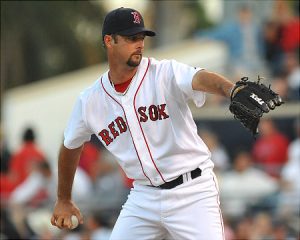
Tim Wakefield of the Boston Red Sox starts against the New York Yankees March 13, 2009 at City of Palms Park in Fort Myers, Florida. (Photo by Al Messerschmidt/Getty Images)
Luis Tiant
Tiant had been a successful pitcher in Cleveland in the sixties, even leading the league with a 1.60 ERA while winning 21 games in 1968. His career had fallen on hard times before coming to Boston however. Tiant missed half the season in 1970 and had yet to pitch when the Braves released him in May 1971. With Tiant a free agent, the Red Sox decided to take a chance on him and his injured arm. The move didn’t pay off immediately, as he was 1-7 the rest of that season. However, the dividends down the road were immense.
Tiant went on to have an excellent career with the Red Sox and become a borderline Hall of Fame candidate. I listed Tiant as one of the Red Sox five greatest right-handed pitchers ever a few months ago. By 1972, Tiant led the American League with a 1.91 ERA. He’d win 20 games as a member of the Red Sox three times, winning 122 total in parts of eight seasons. He also went 3-0 in the 1975 postseason with a 2.65 ERA.
Rich Garces
The lovable “El Guapo” is the third “scrap heap” free agent signing. Listed at a generous 250 pounds, (it was probably closer to 300), Garces looked like he belonged anywhere but playing professional sports. Garces pitched seven seasons for the Red Sox and developed into one of their more reliable relief pitchers. Between 1990 and 1995, Garces had only appeared in 26 Major League outings, a number he eclipsed in 1996 alone with the Sox. Garces’ best season came in 1999 when he put up a 1.55 ERA. Starting with that season, Garces won 19 games against just 3 losses over a three year stretch.
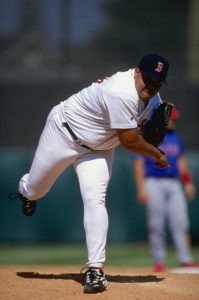
Rich Garces of the Red Sox pitches during a Spring Training game against the Rangers in Fort Myers, Florida. Mandatory Credit: Brian Bahr /Allsport
